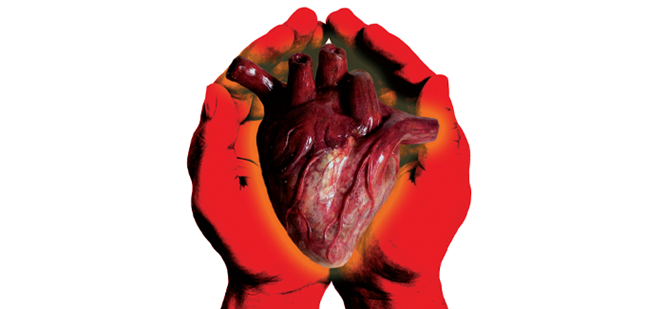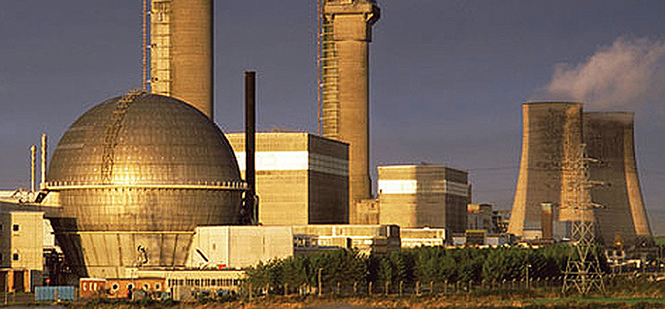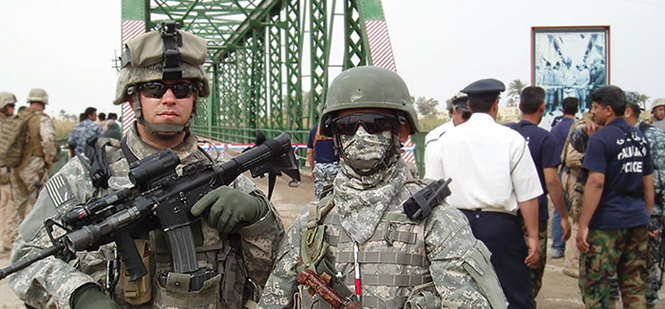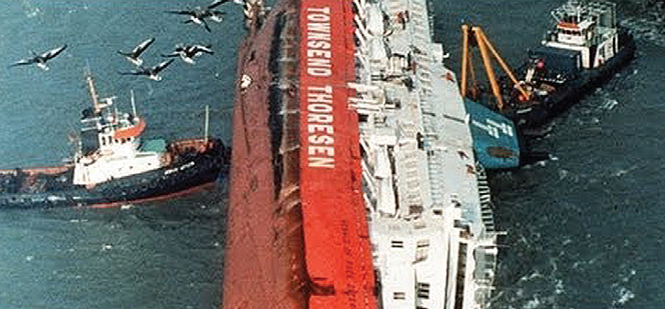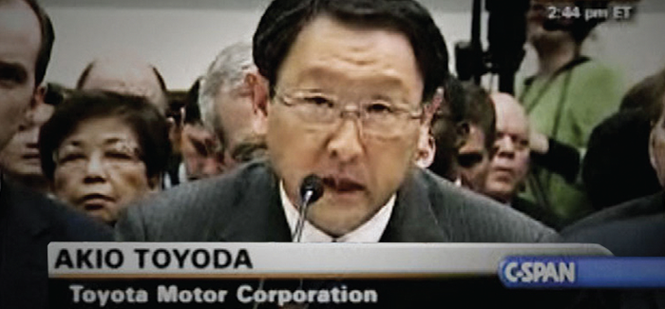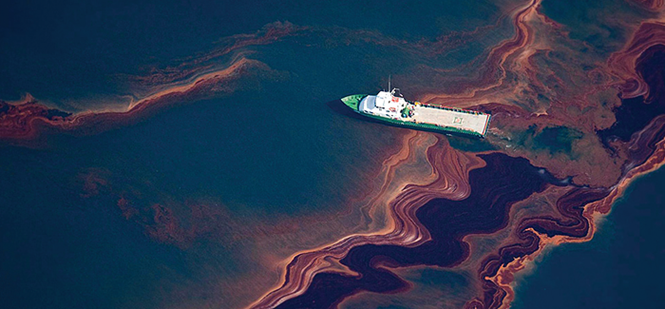Brought back to life
Crisis, disaster and rebranding
In recent years, scandal has rocked many of the world’s most powerful and hallowed institutions. Some of this disgrace has come from revelations of misbehaviour, such as British MPs and their corrupt expenses claims, sexual abuse in the Catholic church and the BBC and phone hacking by the tabloid press. Other organisations have acquired infamy through their working practices, be they global banks with their dodgy loan books and rate fixes or oil giant BP causing the greatest environmental catastrophe in American history with the 2000 Gulf of Mexico oil spill.
Institutions have faced up to these crises in different ways. An unexpected reaction was the decision by News International to shut down the UK’s biggest selling newspaper, News of the World, after revelations that the Sunday tabloid was involved in phone hacking.
It is rare, though, for organisations which suffer ill repute to go this far. Many attempt to rebuild their reputations, disassociate themselves from the crisis and rename or at least rebrand to signal a change in direction.
However, simply changing an organisation’s name, commissioning a shiny new logo or giving the brand a fresh coat of paint is not enough to escape the whiff of bad publicity. In fact, some believe a rebrand can make a reputational crisis even worse.
As Simon Cotterrell, strategic partner at brand consultancy Goosebumps, says, “If you are rebranding to overcome a crisis, it can look to the public that you are trying to pull the wool over their eyes. I don’t think consumers wear that. It says you can’t think of anything else, so you are copping out and changing the logo. The first port of call has to be engagement and honesty.”
He says that in the age of social media and rapidly spreading news, crisis situations can escalate quickly, “The key thing is to be aware that all eyes are on you. A logo change is a signifier of change, but is not change in itself. I would only recommend a change of identity if there are things you can change and you want to show it.”
Where organisations change their names to distance themselves from a reputational crisis, the bad odour can still follow. For instance, Ratners was successfully rebranded as Signet Group after boss Gerald Ratner’s infamous comments in 1991 saying the jewellery chain’s products were “crap.” But some believe it took the new company years to shake off the bad publicity.
Windscale, the nuclear reprocessing plant in Cumbria where a fire in 1957 caused a massive radiation leak, became a byword for the dangers of the nuclear industry. In 1981, British Nuclear Fuels changed the site’s name to Sellafield, which seemed to many like an attempt to wash away the stain of ignominy and escape the association with radioactive pollution. This may have actually made the reputational crisis worse, and is regularly wheeled out as a prime example of corporate whitewashing.
Then there is the example of Blackwater, the US security supplier. Its name was denigrated during the occupation of Iraq when its operatives killed 17 civilians in a 2007 massacre in Baghdad. It rebranded to Xe Services in 2009 before dropping this in favour of Academi in 2011. The jury is out on whether the rebrand will make the company a more palatable choice for security work.
As branding expert Rita Clifton, chairman of BrandCap, says, “Don’t mistake rebranding for rebadging – the badge may carry on following you around.” A rebrand requires root and branch reform of the organisation, where rebadging is simply altering the logo, colour scheme and perhaps the name.
How far a brand needs to go to distance itself from a past crisis depends on the seriousness of the crisis set against the strength of the brand, she says. A weak brand will struggle to survive a major crisis, where a strong, long-established brand name may be able to weather the storm.
She gives the example of cross-channel ferry operator Townsend Thoresen, headquartered in Dorset – a weak brand that was axed after the Zeebrugge disaster in 1987 in which 193 people died. Its brand and operations were transferred to P&O. American budget airline ValuJet was broken up following a notrious Florida crash in 1996 in which all 110 people aboard were killed. In subsequent investigations, both disasters were attributed to human error. But lethal accidents don’t necessarily spell the end of a brand. Plenty of long-established airlines have suffered numerous crashes and their brands have survived in tact. In fact, British Midland’s Flight 82, which crashed in Kegworth in the UK, is often held up as a good example of crisis management, leaving the brand’s reputation either unmarred or even enhanced in its wake.
Clifton points to BP and Toyota as powerful brands which have survived serious crises in which people have died. Since 2009, Toyota has made repeated product recalls after some of its cars suffered “sudden unintended acceleration” which has been blamed for the deaths of a number of people.
As Clifton says, “Toyota is a very strong brand with a big cock-up. There’s nothing bigger than people actually dying. What Toyota did to rebrand was to get its people to talk about the improvements the company had made. The chief executive got out and talked about how they had lost their way. It was a rebrand in the sense of a corporate renewal and reviewing the way they were talking about themselves.”
But she warns, “You can’t rebrand from bad mistakes you haven’t put right. Nowadays people will find out at a speed that will take your breath away.” In the digital age “everything is laid bare,” she says.
One of the longest-running recent disasters has been the Gulf oil spill caused by the explosion on BP’s Deepwater Horizon drilling platform in April 2010. The blast killed 11 workers and created the worst environmental disaster to hit the U.S., disgorging some 5m barrels of oil into the Gulf of Mexico, polluting the beaches and waterways of five states. BP was accused of mishandling the crisis, with President Barack Obama particularly strident in his criticism of the company’s management. BP refused to take full responsibility at first, blaming contractors for the explosion.
COMPANIES THAT EXPERIENCE CRISES OFTEN SEEK TO REINVENT THEMSELVES THROUGH A REBRAND. SOME SEE NEW SIGNS OF LIFE, OTHERS ARE UNABLE TO RESURRECT THEIR FLAILING BRANDS. DAVID BENADY INVESTIGATES
Chief executive Tony Hayward made a number of serious PR faux-pas as the crisis unfolded – The White House accused him of “a long line of PR gaffes and mistakes”. He caused outrage when he told journalists: “No one wants this over more than I do. I’d like my life back.” And he was strongly criticised for taking time off at the height of the crisis to go yachting round the Isle of Wight.
It was interesting to compare Hayward’s response with that of Obama – who was quick to blame BP and insisted that he would “spare no effort” in responding to the crisis. Hayward was ousted during the course of the crisis to be replaced with Bob Dudley.
BP’s PR fightback kicked in 40 days after the oil spill began with a TV ad in the US featuring Hayward saying the company would “make this right.” After a confused initial response, BP accepted full responsibility for the spill and outlined the measures it was taking to plug the spill and defend the coastline.
In the case of indiscretions by a boss, some companies believe that ousting the controversial executive is enough to secure their reputation.
Gurbaksh Chahal, a silicon valley celebrity entrepreneur, was sacked in April by RadiumOne, the internet advertising company he founded, after allegations that he committed domestic violence against his girlfriend. Chahal was widely criticised by bloggers, though said in his own blog that the charges were exaggerated. Magazine giant Conde Nast said its UK division was reviewing its relationship with RadiumOne after the allegations. RadiumOne is understood to be considering an IPO, but it is unclear how the internet advertising business will rebuild its reputation after this crisis.
Branding consultancy Landor Associates has worked with BP in reinforcing the culture of responsibility at the company. As strategy director Ian Wood explains, “Most people would think BP handled it really badly but subsequently they got their act together and put a lot of money behind the clean up, telling employees to go out on the beaches. It felt quite humble. It is really important that we get some sense of humility and regret from an organisation after a crisis.”
He says companies have to work to instill a sense of “character” throughout their organisation. This is distinct from values or corporate ethics, it is a human quality embodying backbone and moral fibre that organisations need to exhibit. Eurostar, which suffered a PR crisis at the hands of trapped train in the Channel tunnel, recovered due to swift action to control the story and offer solutions. Simon Redfern, current director of corporate affairs at Starbucks UK and associate director at Fishburn during the crisis told a London College of Communications audience, “Once reputation falls it is incredibly difficult to get it back. [Brands must] take responsibility, be transparent and authentic and most importantly live up to your values.”
This can be communicated through videos, blogs and online communities as well as through meetings and presentations to staff. “You start off uncovering or developing the sort of person you want the organisation to be, you have to have a definition you want everybody to understand,” says Wood. This is often done using external agencies to spread the message through the business. “It is not just telling people to be good, that isn’t going to change their behaviour. You have to get them to understand how it is going to change they way they do their job,” he says.
Repairing the damage of a crisis requires a deep “cultural” transformation that must be driven from the very top of the organisation. It can be hard for a corporation to understand that it needs to have a personality and character like an individual, but this is where brand consultancies believe they can make a real contribution.
“You can’t rebrand from bad mistakes you haven’t put right. Nowadays people will find out at a speed that will take your breath away”
Jim Prior, chief executive of brand consultancies The Partners and Lambie-Nairn, says, “Businesses have to be committed to changing the culture of their organisations. They have got to get to the root cause of the issue and address that.”
Organisations have to re-examine the culture that led them into the crisis inducing behaviour. Prior warns against being too ready to change physical branding after a crisis. He cites the example of Barclays Bank, which has regularly rebranded over the years, tweaking its logo and rebranding its business in the aftermath of the financial crisis and revelations about its role in the 2008 Libor-fixing scandal.
Prior says, “There’s been rather a lot of branding work Barclays has conducted over time. What that creates is a certain scepticism about whether this activity is going to deliver the fundamentals. It has to deliver on the brand, not just the rebranding.”
There was a time when organisations that became mired in a scandal or created an environmental disaster would attempt to wash away the sins of the past with a rebrand. If a consumer-facing organisation attempted such a sleight of hand today, they would be ripped apart on social media.
Corporations that act as if they were individuals – politically correct ones who see all their behaviour as a manifestation of their inner beliefs, emotions and ethics – will recover from crisis well. Crisis situations usually arise because of some internal failure and organisations have to recognise and admit this. Only then can they start to rebuild their reputation and think about how they portray themselves through branding.

